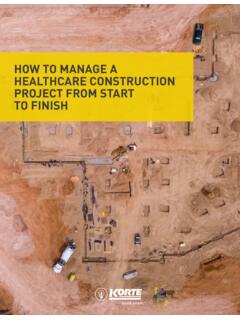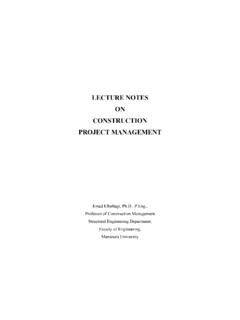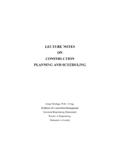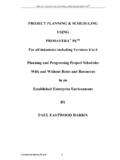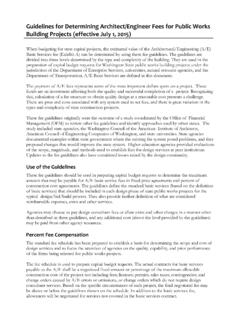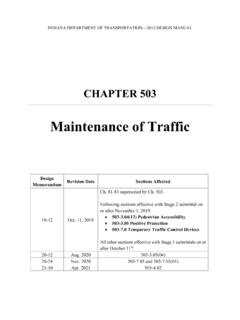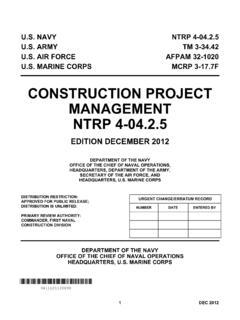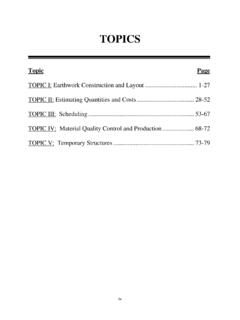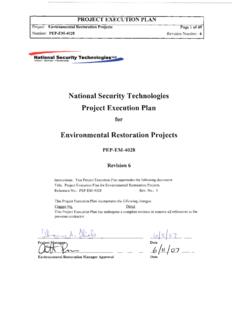Transcription of An Insider’s Guide to Clinical Study Reports
1 The Clinical Study report (CSR) is a crucial document in the drug development and regulatory submission process. According to the International Conference on Harmonisation of Technical Requirements for Registration of Pharmaceuticals for Human Use (ICH) Guideline E3, a CSR is an integrated report of a Study of any therapeutic, prophylactic or diagnostic agent in which the Clinical and statistical description, presentations and analyses are provided in a single report, incorporating tables and figures into the main text of the report and in ensure prompt delivery of high quality CSRs, a medical writer needs to both understand regulatory requirements and have the ability to decode the many aspects of the project knowledgebase. We provide here some key learnings from the Niche medical writing team, who have been writing CSRs for the pharmaceutical industry since Insider s Insight into Clinical Study ReportsCopyright 2014 Niche Science & Technology Ltd, UKReporting requirementThe need to provide a formal report describing the conduct and findings of a Clinical Study is stated in Section of the ICH Guideline for Good Clinical Practice E6 (henceforth ICH E6) [1]: Whether the trial is completed or prematurely terminated, the sponsor should ensure that the Clinical trial Reports are prepared and provided to the regulatory agency(ies) as required by the applicable regulatory requirement(s).
2 Guidance has also been provided on the structure and content of CSRs [2]: The sponsor should also ensure that the Clinical trial Reports in marketing applications meet the standards of the ICH Guideline for Structure and Content of Clinical Study Reports . Despite being 20 years old, ICH E3 remains the definitive guidance for writing CSRs [2]; additional direction was provided in the form of a question and answer (Q&A) supplement that was published in 2012 [3]. The guidelines aim to allow the author to write a report that is complete, free from ambiguity, well organised and easy to review .Since 1995 there has been considerable debate over the use of the information provided in ICH E3 as an authoritative template. The 2012 Q&A supplement clarified that ICH E3 should be regarded as a guideline and not a set of rigid requirements or a definitive template [3]. Many organisations regularly involved in conducting Clinical trials have their own CSR templates, sometimes with associated guidance documents that describe the interpretation of the ICH internet is a ready resource for guidance on the structure and content of CSRs; however, equal emphasis is not always given to information provided by different interested parties.
3 An excellent summary of various relevant documents can be obtained from a 2014 report to the European Medical Writers Association (EMWA) [4].Before you startThe CSR describes the methods and results of a Clinical Study and provides a short discussion that contextualises the findings. Collect the documents identified in the checklist provided in Appendix 1, asking for Microsoft Word versions where possible Establish to what extent you plan to follow the guidelines on the report content defined in ICH E3 Adopt a document template that captures all ICH E3 requirements and maintain a consistent st yle* Guidelines and statutory requirements change. Make sure that you are aware of current requirements before you startPrepare to succeed Delay writing the CSR and you risk producing a lower quality report: members of teams move on, the need to reacquaint oneself with the details of a Study is inefficient and retrospective reporting can alter perspective and influence data a plan.
4 A CSR often requires contributions, review and approval by various members of the Study team. Programme leaders and key operational personnel are usually eager to focus on delivery of the next Study just as you need their contribution to the CSR. Identify all members of the team confirming their roles, responsibilities and commitment to making their contribution to the stakeholder-agreed milestones and timelines.*Our ICH E3-compliant CSR template provides a superb structure in which to report your Study findings. Please contact us if you would like a copy. 2 Report constructionOnce you have a document template you can prepare a CSR shell. A CSR shell is effectively the front half of the report that incorporates methodological and administrative information from the Study conduct documents. Documents that are useful when writing the shell include: Relevant report template Final protocol and protocol amendments File notes (notes explaining specific incidents during the Study ) Study Procedures/ Study Reference Manual Statistical/Reporting analysis plan Details of ethics committee, monitor, laboratories, etc Sponsor report writing SOPs/style guidesOnce the shell report has been reviewed and approved by the review team it can be locked allowing focus to shift to other sections of the CSR.
5 The results sections can be populated once the data or statistical package becomes available. These are most frequently provided in the form of data tables, listings and figures (TFLs). Although it will depend on the CSR template and Study design, Study areas that may require their own specific sections within the report include: Study population/demographics, safety, pharmacokinetics, pharmacodynamics, efficacy, pharmacogenetics, biomarker data and/or health purpose of the CSR is to display and discuss relevant findings that have been distilled from the TFLs, drawing attention to possible data signals. The author should also detail any events that were not compliant with the Study protocol. Presentation of results must be factual and objective. Figures and tables can be an informative way of illustrating important observations. It is recommended that the body of the report includes in-text summaries of data rather than a list of cross-references to an appended data package.
6 Any post hoc analyses on the Study data should be reported in an appendix to the report as the only data eligible for inclusion in a CSR are those for which the analyses were pre-planned. Supporting analyses to aid the interpretation of results, for example, should also be appended. If post hoc analyses are appended to the CSR, the associated rationale must be included in the section of the report that details changes in the conduct of the Study or planned Discussion section of a CSR should avoid simply restating the results. Neither should it be used to introduce data not provided in the results sections. The Discussion should focus on factual review relating to the Study objectives and endpoints rather than hypothesising. Use of superlatives and overstating the meaning of your observations must be should examine any problems, key learnings or perceived benefits while putting the results into the context of the current development programme.
7 Interaction with the project team should provide a wider strategic understanding of the product and key insights into specific aspects of the report such as statistical and pharmacokinetic interpretation. The Investigator s Brochure may serve as a good source of background information for the Discussion and referencing the scientific literature is permissible. However, heavy referencing of the literature can be indicative of over interpretation and ,SAP etc,CSRTe m p l a t eReview Team3 scheduling DeliveryPlanning achievable timelines and milestones and agreeing them with the project team is essential to ensure timely delivery of your report. The time needed to write the CSR generally depends on the complexity of the Study design and the size of the data package. How long it will take to write will also depend on the experience and ability of the writer. It is therefore difficult to predict exactly how long a report should take to write. Keeping in regular contact with the team while you focus on writing the first draft of the CSR keeps the project foremost in everyone s a CSR into smaller deliverables, each to be completed on a timescale to fit with the final CSR deadline, is essential.
8 A front end shell, possibly including unpopulated in-text summary results tables and appendices, can be completed in advance of receipt of the statistical data package. However, using partial or draft data sets to prepare the CSR can introduce hard to find delivery is benefitted by clear lines of communication. Determine the project team s preferred method of communication; whether that is email, phone or instant messenger. It is worth agreeing with the project team that the 3 10 page Study Synopsis at the front of the CSR will NOT be prepared until the text in the body of the report is considered final. The synopsis will only take a few hours to write and preparing earlier drafts saves little time at the risk of introducing cannot over-emphasise the importance of clarity and attention to detail throughout the report. However, the section on Study design often requires some care. It is not normally possible to cut and paste information relating to the design from the Study protocol without some modification.
9 Beyond that, you will most likely want to give the greatest emphasis to the primary and secondary endpoints as these represent the pivotal areas need the most emphasis, detail and explanation?QAWriters need to be good at managing their time and prioritising their workload, particularly when working on more than one project . If you find yourself running out of time or struggling with a specific aspect of a report it can be beneficial to ask for help. Although some teams are very busy and hands off , many are keen to help and welcome this sort of interaction. Do this as early as possible. If something goes wrong, be proactive and identify a way of solving the problem as quickly and efficiently as possible. QAThe Discussion can be challenging, particularly in exploratory research studies where the results are highly technical. The reporting and interpretation of the ever-increasing amount of biomarker data can be tricky. Often there is little time available for extensive reading around a topic.
10 In these circumstances it is imperative for a writer to be able to engage with and use the knowledge held within the project do you think is the most challenging section to write?What qualities should a good CSR writer foster?QAInsider interview with one of our experienced medical writersEuropean Medical Writers Association (EMWA) StudyA survey of medical writers and industry professionals aimed at estimating expected CSR delivery timelines was conducted by EMWA. Participants were asked to determine typical average durations for analysis and reporting tasks for a Study of moderate complexity [5]. Basing estimates on a Phase III Study conducted in 200 400 subjects a mean (SD) duration for preparation of the first draft CSR from receipt of final TFLs was ( ) working days (N=78). However, the range was broad [5 45 working days] underlining the high variability in delivery times. Estimates for conversion of first draft to final CSR was also wide (mean [SD]: [ ]; range: 3 120 working days).
